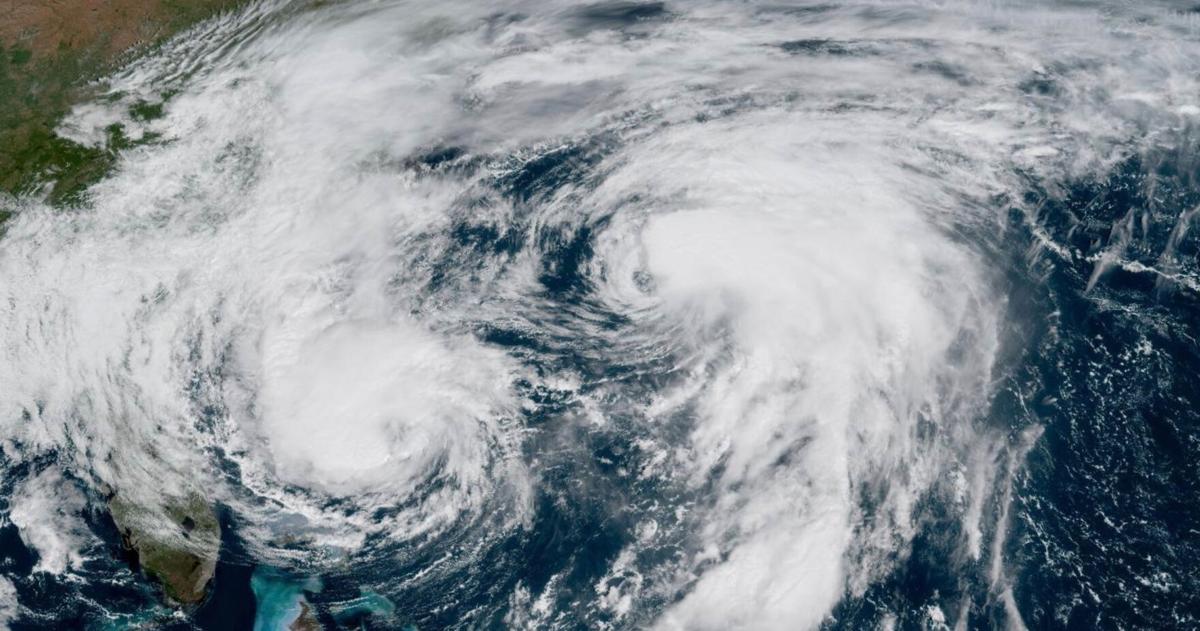
CHARLESTON — Federal offices and agencies across South Carolina remained closed or under significantly restricted operations Oct. 2 as the federal government shutdown marched into day two.
The closure comes as South Carolina makes its way through the tail-end of the 2025 hurricane season. While local National Weather Service forecasters will remain on duty during the shutdown as essential personnel, the data streams that inform their forecasts could face disruptions long after the government returns to business as usual.
“ The big issues are just anxiety and inefficiency,” said Debra Hernandez, the executive director of the Charleston-based Southeast Coastal Ocean Observing Regional Association, or SECOORA.
SECOORA is one of several regional organizations that form the federal government’s Integrated Ocean Observing System. That coalition provides short- and long-term weather and climate information about the ocean to federal agencies. SECOORA oversees that work along the hurricane-prone corridor of North Carolina, South Carolina, Georgia and Florida.
Hernandez points to a recent example to illustrate the issue. A brief power outage caused a temporary disruption in the delivery of data from a sensing buoy offshore of the Carolinas. Those buoys provide information on wave height, wind, currents, salinity and temperature which then feed into hurricane and marine forecasts (among other things).
She said the issue was fixed on SECOORA’s side, but they don’t know if things are fine on the fed’s side because nobody is there to answer their questions.
“If it’s not making it through to the federal pipeline, then it can’t be used in the forecast,” she explained. “So there could be some data gaps, which in the day-to-day maybe aren’t a big deal. But if you’ve got storms approaching and rough things happening offshore, it could mean you don’t have the most up-to-date information.”
Hernandez said that this time of year also is typically when her organization lines up federal funding for the following September. But, again, nobody’s taking their calls. She said a prolonged shutdown might disrupt SECOORA’s weather monitoring work come September 2026, a period that’s historically the most active part of the Atlantic hurricane season.
‘Big trouble’
It isn’t just weather forecasting that could be disrupted.
“ The shutdown … is going to have effects on both the immediate and the long-term management of our oceans,” said Gib Brogan, the fisheries campaign director at the nonprofit Oceana.
Short-term, Brogan said the shutdown could disrupt the management and administration of fisheries along the coast. An extended shutdown could hinder the collection of federal environmental recordkeeping, he said.
“If we can’t go and count the fish in (specific) times and areas, we lose that information,” Brogan said. “And we may not be able to see the trends that are happening with our fish populations, and our management will suffer from it.”
Brogan said that South Carolina, specifically, could lose important federal environmental and environmental data during the shutdown. As of September 2024 — before the Trump administration layoffs in early 2025 — the state was home to nearly 25,000 federal civilian employees, according to a Congressional Research Service report.
“The (NOAA) Office of Coastal Management is right there in Charleston,” Brogan noted. “Their work informs the way we interact with the oceans . Those folks aren’t going to work today. Those folks aren’t going to be able to provide their expertise.”
But they aren’t the only ones who won’t go into their office today. The S.C. Department of Natural Resources, which houses some of its Marine Resource Division operations in the federally-owned Hollings Marine Lab at James Islands’ Fort Johnson, has been temporarily displaced by the closure.
“We are adjusting workflows and work locations to avoid interruptions to work during the shutdown,” a spokesperson for the department wrote in an email. “If the shutdown continues, the processing of federal awards could be delayed, impacting our federally funded projects and activities that involve our federal partners.”
Meanwhile, the Environmental Protection Agency is set to have nearly 90 percent of its staff furloughed. Katie Day, a senior environmental science and policy manager with the Surfrider Foundation, said that would halt the EPA’s work on pollution enforcement, facility compliance inspections, and even shut down hotlines for communities to report water pollution.
“The lack of enforcement and oversight will inevitably result in an increase in air and water pollution, which could ultimately impair water quality at our beaches,” Day said. “Should certain environmental health monitoring efforts pause, such as NOAA’s Harmful Algal Bloom Monitoring System, there could be immediate human health and marine wildlife threats.”
To continue critical data work during past shutdowns, SECOORA has accessed federal funds already awarded, Hernandez said. That’s the plan this time around, too, but she has concerns.
“ There’ve been some very novel, never-before-seen things happening with the way federal government flows in the past year,” she said. “We’re assuming we’ll still have access so we can pay our bills, because we have millions of dollars in outstanding contracts. If that doesn’t work, we’re in big trouble and everything stops.”



